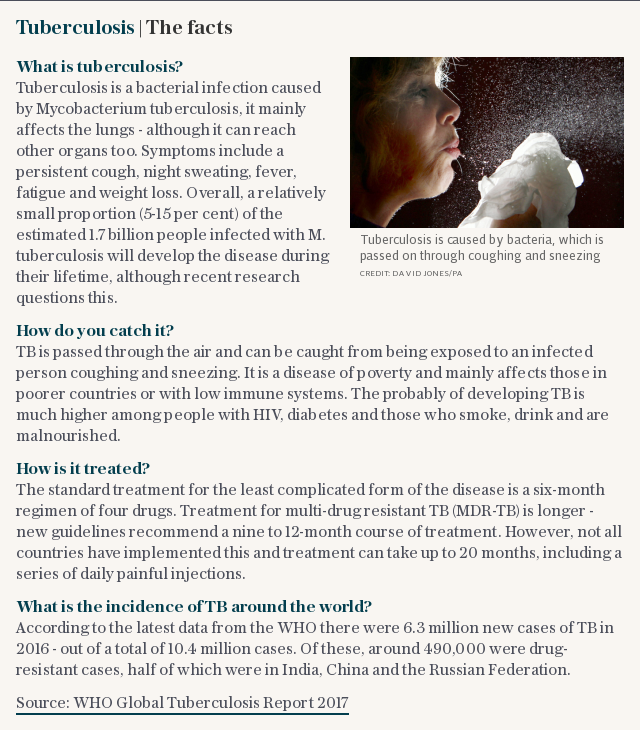'Severe gaps' in identifying drug resistance puts TB patients at risk, report claims

A strain of multidrug resistant tuberculosis (MDR-TB) which evades commonly used diagnostic tools and leaves patients inadequately treated has been identified in South Africa.
The country has one of the highest rates of TB infection in the world, with more than 320,000 people infected in 2017, according to the latest World Health Organization (WHO) figures.
The situation is being made worse by a resistant strain of the disease which is not picked up by the most commonly available diagnostic kits, according to a report published in Lancet on Thursday.
Globally, MDR-TB cases are becoming more common, with the 2018 Tuberculosis report describing rising resistance as a “global health crisis”.
The WHO advocates several rapid diagnostic tools to identify MDR-TB, but the Lancet report says there are “serious gaps” as these tools do not identify all resistant strains of the disease.
“There are some [TB] strains which have developed particulate mutations, which are not picked up by these tests,” said Dr Emmanuel André, clinical biologist and co-author of the report. “So then the patient receives the wrong treatment and remains infectious, and can spread TB further."

“We risk creating an epidemic of strains which are more difficult both to identify and treat,” Dr André added. “It’s urgent to put in place alternative strategies in Southern Africa.”
The WHO is criticised in the report for not moving fast enough to plug the gap, but it said last week that it was monitoring drug resistance and that there are no easy solutions.
“We are aware and mindful of this issue,” said Dr Matteo Zignol, team leader of research for TB elimination at the WHO Global TB Programme. "We know South Africa has a problem with drug resistance and we have been tracking this over time."
Experts say the gene sequencing technology is needed on the ground in more locations to provide quicker and more accurate diagnosis. However, the technology – still in its infancy – is expensive and not straightforward to use.
“We are looking at the role of sequencing technology, and want to make it the gold standard of TB treatment in the future,” said Dr Karin Weyer, coordinator for laboratories, diagnostics and drug resistance at the WHO Global TB Programme. “One of the burning issues for stopping the TB endemic is that the world needs to get on top of resistance. Only one in four MDR patients are put on the correct treatment."

South Africa is not the only country reporting instances of drug resistant TB. The WHO estimated that there were 340,000 new cases of MDR-TB diagnosed in 2016, with around half of these found in India, China and Russia.
Europe has also experienced a rise in resistance. Nine of the 30 countries with the highest level of MDR-TB cases are in the region, according to a report from the European Centre for Disease Prevention and Control.
Experts are concerned that increasing resistance will hamper efforts to eradicate the disease, as only a third of drug-resistant cases are treated successfully.
“The presence of this mutation in South Africa is worrying, but the numbers are low,” said Dr Tim Walker, who specialises in microbiology and infectious diseases at the University of Oxford’s Nuffield Department of Medicine. “It’s not time to panic yet, but it is another small piece of evidence that suggests we need more sophisticated diagnostic tools.”

Protect yourself and your family by learning more about Global Health Security

 Yahoo News
Yahoo News 
